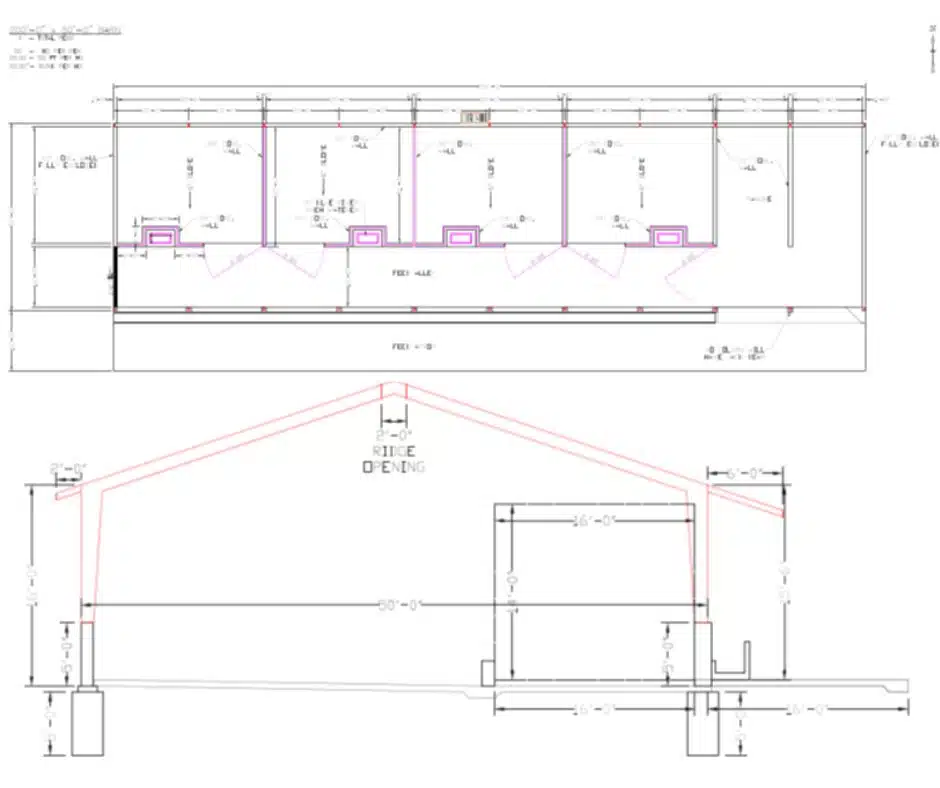
Choosing the right building for cattle confinement is a critical decision for any livestock operation. It
impacts everything from animal health and productivity to labor costs and overall return on investment
(ROI). This guide explores the key considerations for cattle confinement buildings, drawing insights from
the 2025 CCS Cattle Symposium.
The Importance of Cattle Confinement
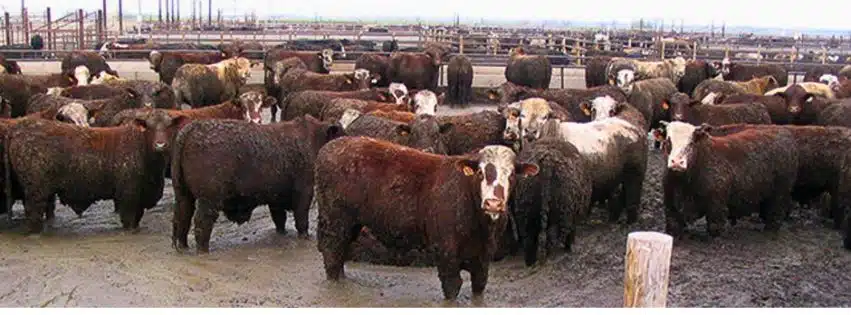
Putting cattle under cover offers a multitude of benefits that contribute to a more efficient and
profitable operation. Here’s why you should consider it:
- Increased Rate of Gain: Consistent feed consumption leads to a higher rate of gain.
- Maximized Input Utilization: Confinement helps optimize the use of feed and other inputs.
- Reduced Labor Costs: Direct labor costs can be significantly reduced with proper confinement
facilities. - Increased Cattle Comfort: Providing shelter improves animal welfare and reduces stress.
- Smaller Footprint: Confinement buildings often require a smaller land area compared to open lots.
- Nutrient Capture: These systems facilitate capturing valuable nutrients, reducing the need for
additional fertilizer. - Reduced Heat Stress: Shelter helps mitigate the negative impacts of heat stress, which can severely
affect cattle health and productivity.
Ultimately, these advantages combine to increase your ROI.
Understanding Heat Stress in Cattle
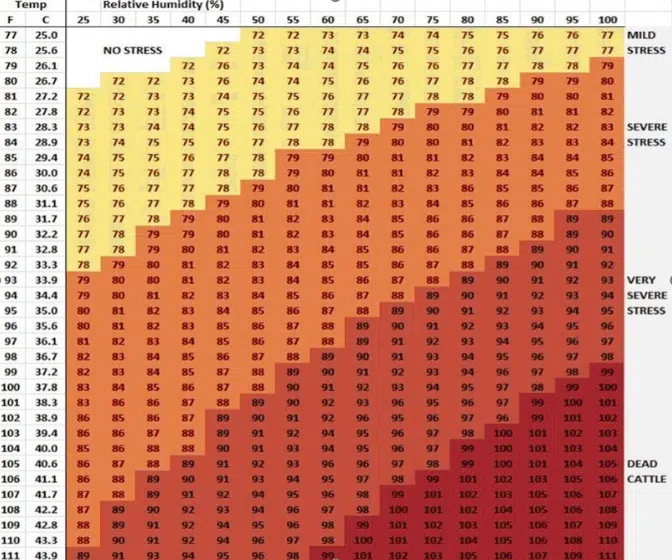
Heat stress is a serious concern in cattle management. As the Heat Stress chart indicates, there is a
direct relationship between temperature and relative humidity and the resulting stress levels in cattle.
Cattle Producers need to be aware of these factors to design appropriate housing.
Air Flow: The Key to Functionality
Proper airflow is essential for a functional and healthy environment within cattle barns.

Curtains in livestock barns offer numerous benefits, including improved ventilation, temperature
regulation, protection from harsh weather, and enhanced animal health and productivity, all while being
a cost-effective and environmentally friendly solution.
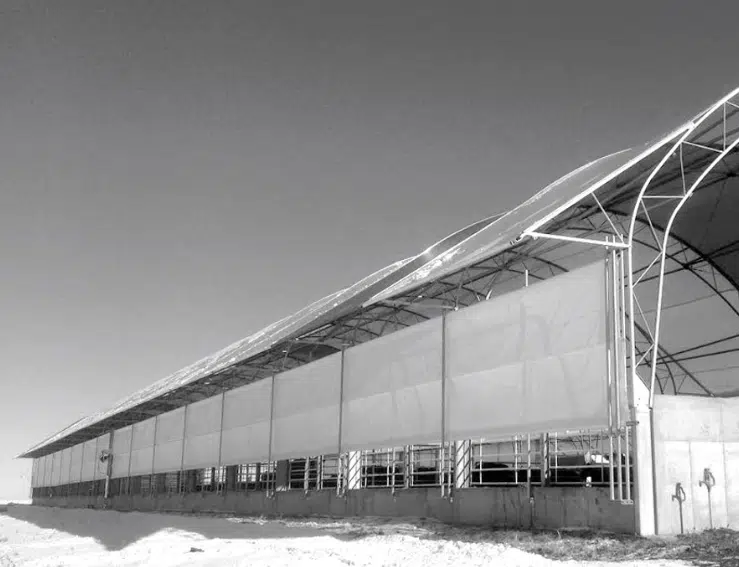
Here’s a more detailed look at the advantages:
-
Ventilation and Temperature Control:
- Natural Ventilation: Barn curtains allow for natural ventilation, drawing in fresh air and expelling stale, hot, or humid air, especially during warmer months.
- Temperature Regulation: By controlling airflow, curtains help maintain a stable and comfortable temperature inside the barn, minimizing heat stress in summer and preventing drafts and cold in winter.
- Moisture Control: Curtains can help regulate moisture levels, preventing excessive humidity, which can lead to health problems for livestock.
-
Protection from Harsh Weather:
- Wind and Snow Protection: Curtains shield livestock from strong winds, snow, and rain, protecting them from the elements and preventing heat loss.
- UV Protection: Some curtains offer UV protection, shielding livestock from harmful sun exposure.
-
Improved Animal Health and Well-being:
- Reduced Stress: By creating a more comfortable and stable environment, curtains can reduce stress on livestock, leading to improved health and productivity.
- Disease Prevention: Good ventilation and temperature control can help prevent the spread of diseases and respiratory problems in livestock.
-
Cost-Effectiveness and Versatility:
- Energy Efficiency: Curtain systems are a relatively low-cost and energy-efficient way to manage ventilation and temperature compared to other methods.
- Versatility: Barn curtains can be used in various livestock settings, including dairy barns, horse barns, and poultry houses.
- Easy Installation and Maintenance: Curtains are relatively easy to install and maintain and can be customized to fit specific barn needs.
- Dividing Spaces: Curtains can be used to divide a barn into different sections for various purposes, such as feeding areas, resting areas, or storage areas.
Key Considerations for Design Flexibility

Cattle Producers should evaluate the many design options when choosing to construct a building that
fits their business plan. Cattle barns can be constructed with various materials, including steel and wood,
and in different styles (Gable, Monoslope, Fabric).
Below are several building design styles, each with unique airflow and ventilation characteristics.
Gable Roof Designs:
- Gable roofs are a common design, known for promoting natural ventilation.
- Proper airflow is crucial, with ridge vents playing a key role in removing hot air.
- Both winter and summer ventilation strategies are important.


Mono-Slope Designs:
- Mono-slope buildings offer another ventilation approach.
- These designs utilize adjustable curtains and openings to manage airflow.
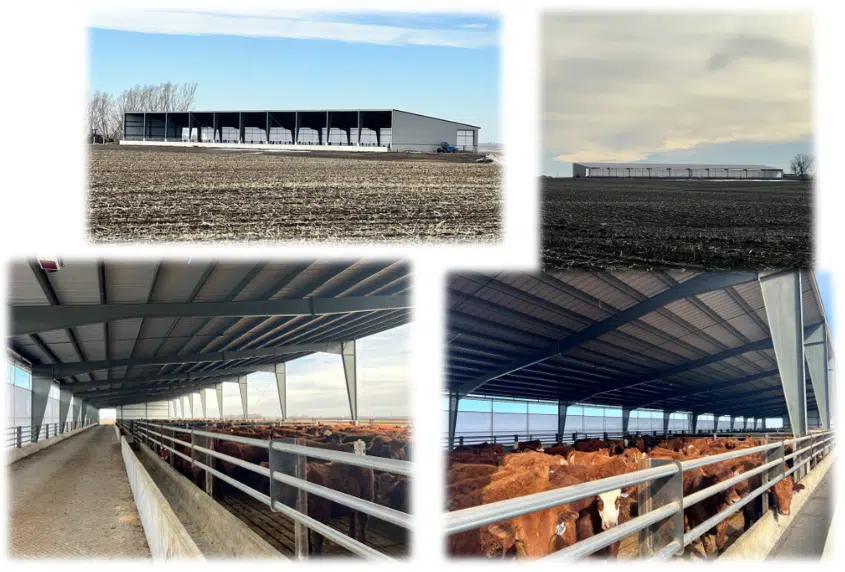

Fabric Buildings:
- Fabric buildings are presented as another option.
- These can also be designed with office space.
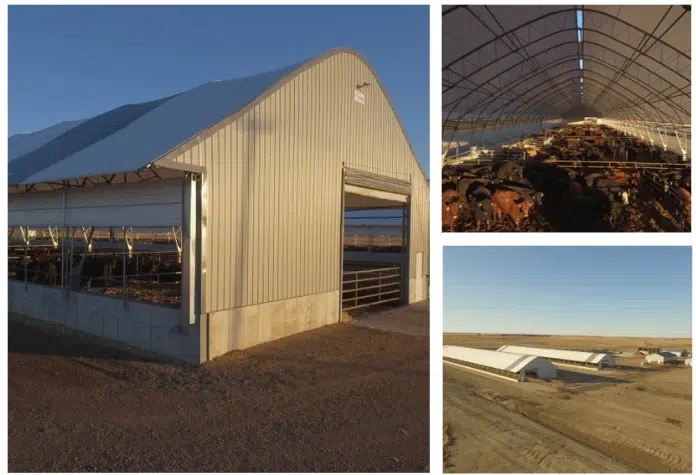
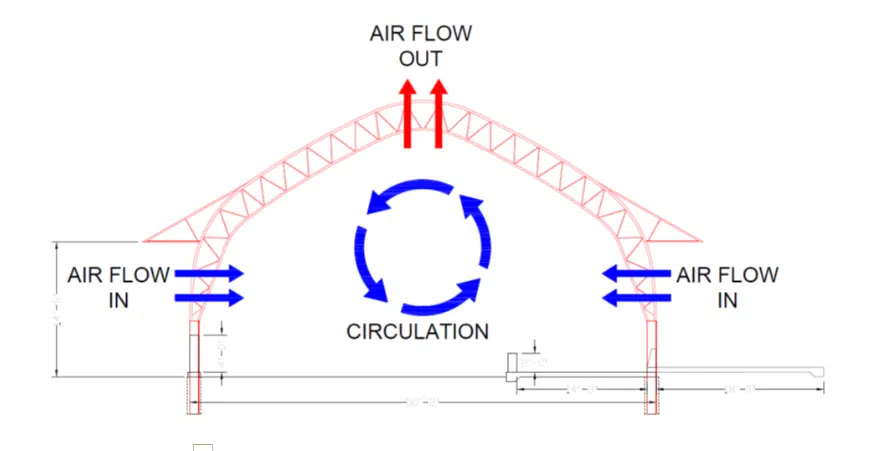
Other Considerations: Bed Pack or Deep Pit Designs

Bed Pack Barn Design
- Increased animal comfort
- Consistent rate of gain
- Various configurations to accommodate the entire life cycle
- Lower capital investment than a deep pit barn
- Reduced cattle handling stress
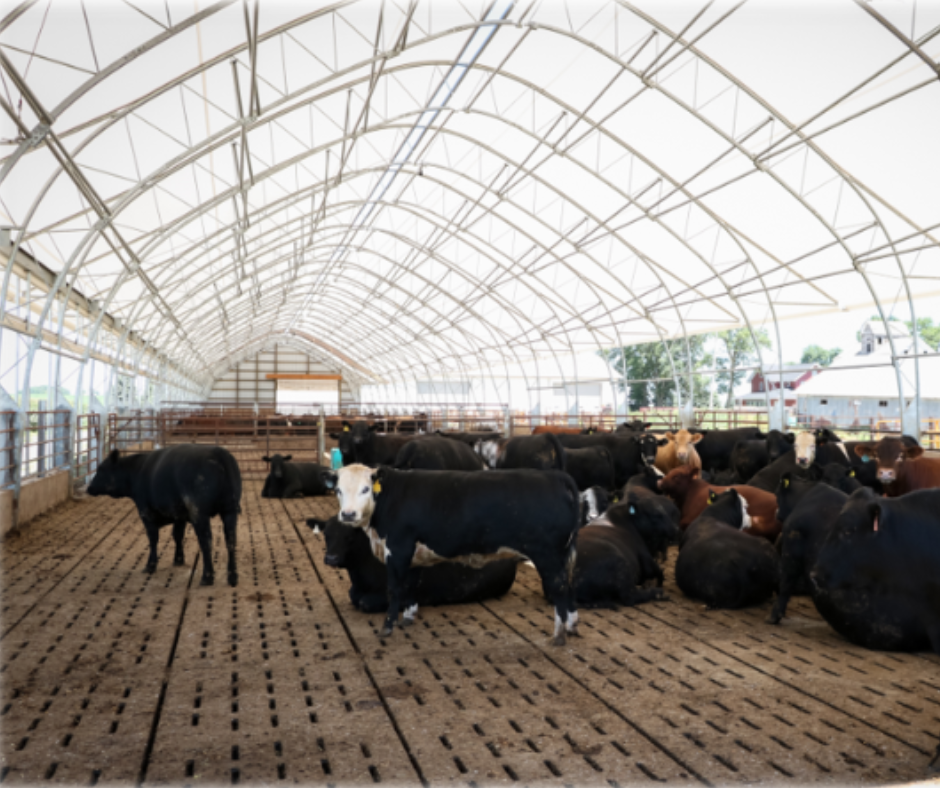
Deep Pit Design
- Consistent rate of gain
- Reduced cattle handling stress
- Greatly reduce labor
- Smaller footprint
- Capture nutrients
- New technology to improve nutrient values and eliminate the need for agitation prior to pumping
Conclusion
Choosing the right cattle confinement building is a multifaceted decision. By carefully considering factors
like ventilation, heat stress, design flexibility, and the specific needs of your operation (beef or dairy),
you can create a system that optimizes cattle comfort, enhances productivity, and maximizes your ROI!
At Central Confinement Service, LLC, each design we offer comes with its own set of features and
benefits, tailored to improve cattle comfort, durability, ease of maintenance, and labor efficiency. Our
buildings are designed to support the health and productivity of your herd, ensuring that you get the
gains you’re looking for in your operation.
What else would you like to know? Just, fill out the form below or give us a call at (402) 563-6041 and
put our 40 years of industry leading experience to work for you!
